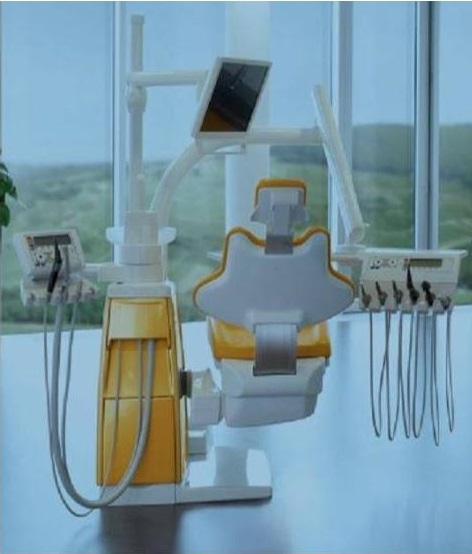Options for whiter smile
Broadly, there are 2 approaches to dealing with discolouration of teeth:
- Get rid of the discolouration
- Hide the discolouration
|
|
Getting rid of the discolouration
Surface staining can be removed quite easily by brushing and professional cleaning. Discolouration to the tooth structure is under the surface, and therefore can only be removed by tooth whitening (bleaching) procedures. Visit your dentist to deal with any dental caries. Tooth whitening products are essentially bleaching agents, usually carbamide peroxide or hydrogen peroxide based. These substances seep into the enamel and dentine by the same route that stain causing substances do, and react with the substances. Tooth and gum sensitivity is a common side effect of tooth whitening –in-office, at-home or over-the-counter tooth whitening systems. The peroxide can irritate the nerve of the tooth or the tissue of the gums, though this effect is temporary and usually mild. A major advantage of the tooth whitening approach (provided it is effective in whitening the teeth) is that it does not entail mechanical removal of the tooth structure, unlike veneers, crowns and to a lesser extent, composite bonding. |
|
Hiding the discolouration
This is the principle behind the use of dental veneers and crowns to correct the colour of front teeth. For some types of discolouration (like severe Tetracycline discolouration), this may be the only way to obtain a set of really white teeth. Veneers can be made of ceramic or composite resin (this sort of veneer is often referred to as 'bonding'). Ceramic veneers are more costly, but generally more durable and colour stable, because the ceramic surface is extremely resistant to stains, although the margins (edges) can become stained over time. |
|
Composite resin veneers are much cheaper than ceramic veneers and can be done in a single visit. Modern composite resin materials are also very colour stable. However, they are less wear resistant, because the material, being a resin, is softer than ceramic. Because the surface can become worn and rough, these veneers can, over time, discolour and stain. On the plus side, they are relatively easy to repair should they be damaged.
Crowns are similar to veneers, except that they cover the entire tooth rather than just the front. The main advantage of this approach is predictability. The dentist is able to make a decision about the colour of the ceramic or composite resin used, and the degree to which the underlying colour should be masked. |
|
What can I do to reduce discolouration of the teeth?
There are some measures that anyone to reduce the amount of discolouration of the teeth. These are:
|
|
How do whitening toothpastes work?
Practically all whitening toothpastes work by polishing the surface of the teeth. All toothpaste contains some form of abrasive (usually Titanium Dioxide) to help clean the tooth surfaces. Whitening toothpastes generally use a coarser grade of abrasive to obtain more scrubbing effect. Some manufacturers claim to put in some sort of whitening (bleaching) agent, but the effect is likely to be quite minimal, since the dosage is very low, and the amount of time the toothpaste stays on the teeth is very short in normal circumstances. |
|
How white can teeth become with in-office tooth whitening?
Most in-office systems use about 35 percent hydrogen peroxide gels, with a high intensity light to expedite the bleaching chemical reaction. Your teeth will be cleaned to polished off surface stains and a protective barrier applied on the gums. Tooth whitening is, unfortunately, relatively unpredictable. It also does not work on tooth decays or dental restoratives such as fillings, crowns or veneers. In general, we expect 7-10 shades improvement (based on a standardized Vita ceramic Shade guide), but this is also dependent on the type of discolouration experienced. Tetracycline and fluorosis discolouration are extremely resistant. Tarnishing due to coffee, wine etc is quite easily removed. |
Considerations for teeth whitening
Over-the-counter bleaching agents are cheap and easily available in pharmacies and online retail stores. However, these products can cause harm to your gums and teeth. Some non-dentists also claim to provide the service of tooth-whitening. The Ministry of Health has issued health advice against teeth whitened or bleached by non-dentally trained person.
Over-the-counter bleaching agents are cheap and easily available in pharmacies and online retail stores. However, these products can cause harm to your gums and teeth. Some non-dentists also claim to provide the service of tooth-whitening. The Ministry of Health has issued health advice against teeth whitened or bleached by non-dentally trained person.





